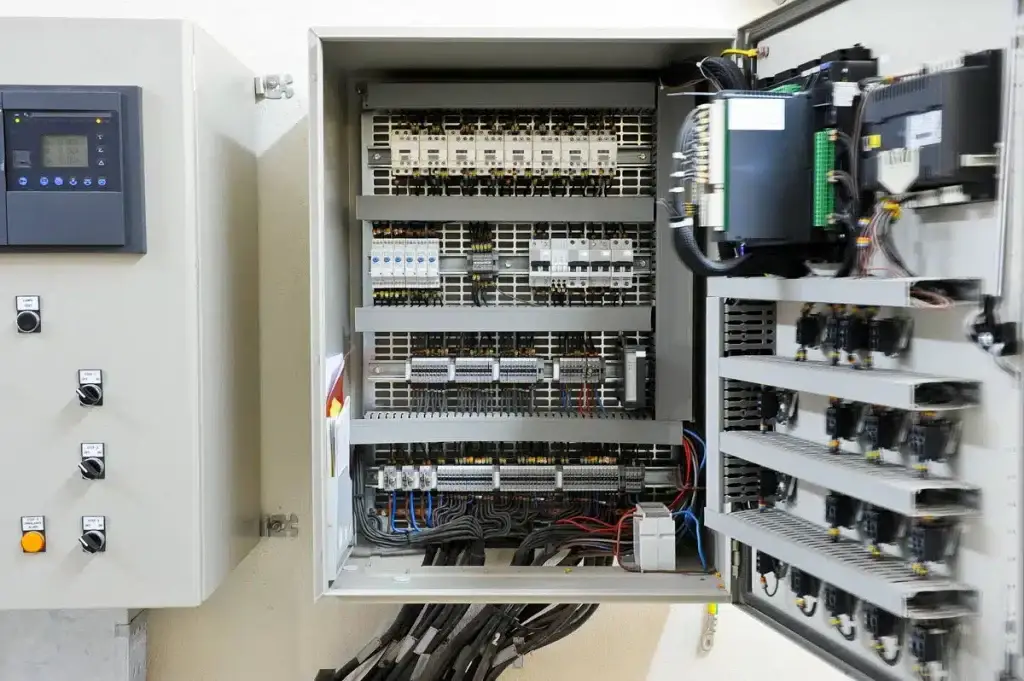AUTOMATION PANEL

AUTOMATION PANEL
An automation panel is a centralized control system, often found in industrial settings, that manages and monitors automated processes. It’s essentially the “brain” of an automated system, allowing operators to control machinery, monitor performance, and adjust processes. These panels integrate various components like PLCs, HMIs, sensors, and actuators to achieve efficient and reliable automation.
For any service and support contact us.
Key Functions and Components:
- Centralized Control:
Automation panels act as a central hub for managing and controlling multiple automated processes within a facility.
- Real-time Monitoring:
They allow operators to monitor the status of equipment and processes in real-time, providing valuable insights into performance and potential issues.
- Data Collection and Analysis:
Automation panels collect data from sensors, which can be analyzed to optimize processes and make informed decisions.
- HMI (Human-Machine Interface):
HMIs provide a user-friendly interface for operators to interact with the automation system, view data, and make adjustments.
- PLC (Programmable Logic Controller):
The PLC is the core component, acting as a specialized computer that executes programs to control equipment based on sensor inputs and operator commands.
- Sensors and Actuators:
Sensors gather data about the process, while actuators respond to control signals to adjust equipment and processes.
- Remote Monitoring and Control:
Modern automation panels can be integrated with remote access capabilities, allowing operators to monitor and control processes from a distance.
- Data Integration:
Automation panels can integrate with other business systems, such as ERP software, to share data and streamline operations.
- Increased Efficiency:
Automation panels streamline processes, reducing manual intervention and optimizing resource utilization.
- Improved Accuracy:
Automation reduces human error, leading to more consistent and precise results.
- Reduced Downtime:
Real-time monitoring and remote control capabilities help in identifying and addressing issues quickly, minimizing downtime.
- Enhanced Safety:
Automation panels can incorporate safety features, such as emergency shutdowns, to protect personnel and equipment.
- Cost Reduction:By optimizing processes and reducing errors, automation panels can lead to significant cost savings in the long run.